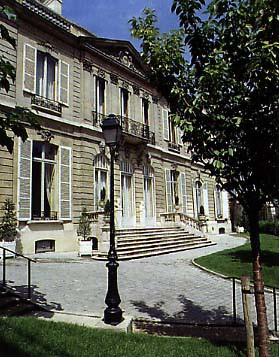The Parisian town mansion which houses Dosne-Thiers Foundation was built in Place Saint-George by a stockbroker whose daughter, Elise Dosne married the politician Louis-Adolphe Thiers. From 1833 onwards, Elise and Louis Adolphe entertained many celebrities of the time and put together an important collection of books and works of art. The private mansion was burnt down by the Communards in 1871 and rebuilt according to new plans in 1873 by Adolphe. It was donated to the Institut de France in 1905 together with its library.
Founded on the initiative of Elise's sister Félicie, the library specialises in French history of the 19th century. In fact, the Thiers library took on its present form very early on, with the purchase of the H.Houssaye collection in 1912 (4,000 volumes on the First Empire and the “Cent Jours”), the Fabry collection in 1914 (1,400 foreign volumes on military history after the First Empire) and, in 1917, the 6,000 volumes that composed the collection (on the history of literature during the 19th century) put together by Jules Clarétie (1840-1913), administrator of the Comédie Française and a member of the French Academy.
Among the many donations received by the Library, the Frédéric Masson (1847-1923) legacy (1926) stands out for its importance and quality (Masson was a fervent historian of Napoleon's and the Secretary of the French Academy). The collection is composed of 70,000 printed volumes, 585 manuscripts, 440 drawings and 40,000 prints of the First Empire, the Restoration and the 1830 Revolution. Works by great artists such as David, Gros, Isabey and Gérard complete the collection.
Also of exceptional note are: the collection of personal papers and letters put together by Jules Baroche, a minister during the Second Empire; the René Famchon collection, composed of books on the war of 1870 and the Commune; the Joseph Denais collection on free- masonry from its origins to 1910; the Eugène d'Eichthal collection on protest movements from 1830 to 1860 and 'Saint-Simonism'; the papers belonging to Boulay de la Meurthe; and the letters exchanged between Théophile Gauthier junior and Damas-Hinard.
The library contains 13,0000 volumes, 1,500 periodicals and over 2,000 manuscripts on the history of France from 1789 to 1900.
Dosne-Thiers Foundation


